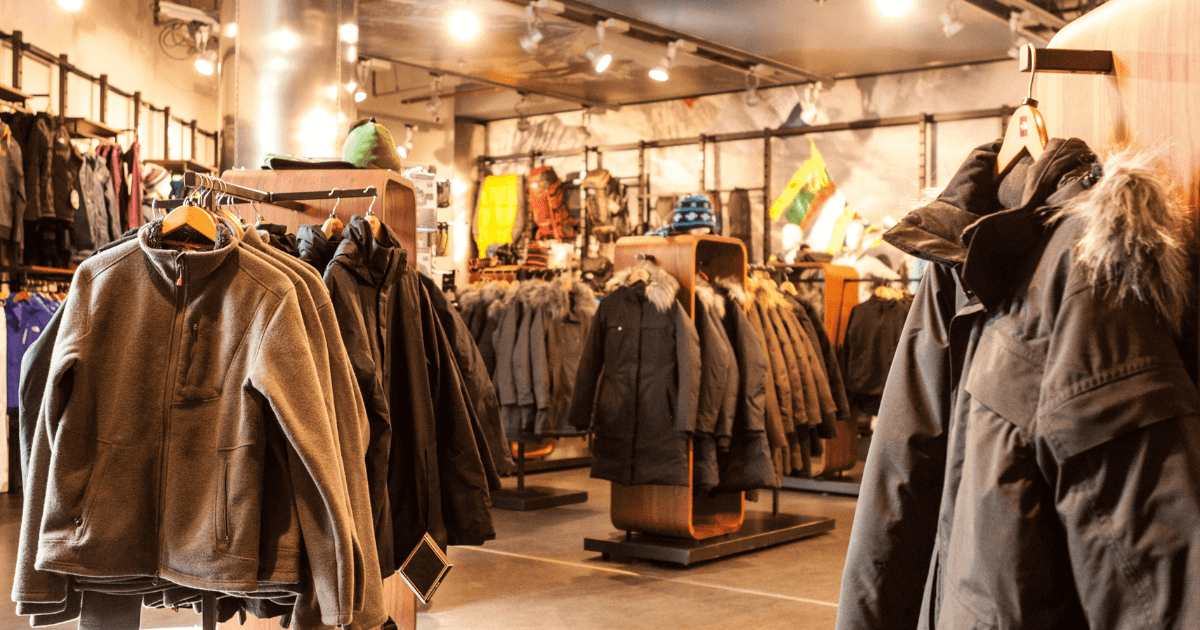Lessons from Zara's Success Amidst 'Retail is Dying' Claims
In the ever-changing landscape of the retail industry, where the fate of brick-and-mortar stores is questioned with the refrain of "retail is dying," Zara, a renowned fashion retailer, emerges as a symbol of resilience.
In the first half of fiscal year 2023, Inditex, the parent company of Zara, unveiled a compelling resurgence in sales, challenging the prevailing narrative of traditional retail's decline.
Let's explore this remarkable success story and uncover valuable insights for fellow bricks and mortar retailers seeking to thrive in this dynamic environment - and why I disagree with the statement that ‘retail is dying’
All the stats from this blog post are drawn from this article here.
In the face of e-commerce dominance and changing consumer habits, Zara achieved the seemingly impossible. The company's sales surged by 13.5% to €16.9 billion during the first half of the fiscal year, with net income soaring by 40.1% to €2.5 billion.
How did they do it, and what lessons can retailers glean from Zara's triumph?
Embrace Online and Offline Synergy
Zara's success is attributed to its harmonious integration of omni channel retailing via online and offline sales channels.
By emphasizing their online presence and delivering a seamless shopping experience, Zara bridged the gap between digital and physical retail.
"Online and offline sales increased by 14% year on year (in constant currency) between August 1 and September 11."
Retailers can take a page from Zara's book by investing in robust e-commerce platforms while maintaining the allure of their physical stores.
Emphasizing convenience, personalization, and omni-channel shopping are great ideas to bring customers into your store and are essential for retail business growth.
Expanding on the notion that smaller, independent retailers may not have the resources for a fully-fledged website, it's crucial to highlight that creating an omnichannel experience doesn't always necessitate a complex online platform.
Here's how smaller retailers can harness the power of digital tools and strategies to compete effectively, taking cues from Zara's success:
Social media platforms like Facebook, Instagram, and Twitter offer an excellent starting point for establishing a strong online presence. These platforms are cost-effective and user-friendly, making them accessible even to those with limited resources.
Retailers can use social media to:
Showcase their products with high-quality images and engaging content.
Engage with customers by responding to comments and messages promptly.
Create a sense of community by sharing customer reviews and stories.
Advertise promotions and events to a wider audience.
2. Harness the Power of Google My Business:
Google My Business (GMB) is a free and powerful tool that allows retailers to manage their online presence across Google's various services, including Google Search and Google Maps. With GMB, businesses can:
Provide essential information like business hours, location, and contact details.
Showcase images of their store, products, and interior.
Encourage customer reviews, which can boost local SEO and trust.
Share updates and posts to keep customers informed about news and promotions.
3. Create a Simple Website:
While a full-scale e-commerce website might not be feasible for some independent retailers, a basic website can be both affordable and highly effective.
A simple website can include:
Store Information: Display essential details such as location, opening hours, and a telephone number prominently. This provides potential customers with quick access to crucial information.
Product Catalog: Even a limited online catalog showcasing popular or featured products can enhance the customer's shopping experience. Include clear product descriptions and prices.
Contact Form: A simple contact form allows visitors to send inquiries or request product availability, fostering engagement.
Newsletter Signup: Collecting email addresses through a newsletter signup can help you build a loyal customer base and keep them informed about promotions and events.
By incorporating these digital strategies, smaller retailers can establish a cohesive omnichannel presence that combines the benefits of physical and digital retail.
While a fully functional e-commerce website is ideal, these practical steps ensure that independent retailers can connect with their audience, enhance convenience, and remain competitive in the evolving retail landscape.
It's all about adapting to the available resources and making the most of them during the supposed apocalypse of retail is dying.
Customer-Centric Collections
Zara's customer-centric approach hit the mark, evident in the enthusiastic reception of their spring/summer collections. Retailers should focus on understanding their customers' preferences and tailoring their product offerings accordingly.
It is about knowing your ideal customer.
"The company said that its spring/summer collections have been well received by customers."
Data analytics and customer feedback can provide invaluable insights for curating collections that resonate with your target audience.
Expanding on the notion of customer-centric collections, it's crucial to address the practical aspects of implementing this strategy, especially for retailers without the resources for extensive data analysis. Here's how retailers can adopt Zara's customer-focused approach in a simplified yet effective manner:
1. Embrace Simplicity in Data Analysis:
While Zara employs sophisticated data analytics, smaller retailers can embrace simpler methods to understand their customers better.
This doesn't require an extensive team or complex software.
It's about making time for customer insights and utilizing loyalty programs.
Here's how:
Customer Surveys:
Engage with your customers directly through surveys, either in-store or online. Ask about their preferences, buying habits, and what products they'd like to see more of.
Tools like Google Forms or SurveyMonkey make it easy to create and distribute surveys.
Analyze Sales Data:
Your point-of-sale (POS) system holds valuable information about which products sell well and when. Regularly review this data to identify trends and customer favorites.
Customer Feedback:
Pay attention to customer comments, both in-store and online. What are customers saying about your products, services, and their shopping experience? Use this feedback to make improvements.
2. Define Your Ideal Customer:
Many retailers try to cater to a broad audience, hoping to capture everyone's attention. However, this often leads to diluted brand messaging and less relevance to any specific group. Instead, focus on identifying and understanding your ideal customer.
Consider:
Demographics:
Who are they? What age group, gender, or income level do they belong to?
Psychographics:
What are their interests, values, and lifestyle choices? What motivates their purchasing decisions?
Shopping Behavior:
Where do they shop? How do they prefer to shop, online or in-store?
Once you have a clear picture of your ideal customer, you can tailor your offerings to suit their preferences more effectively.
3. Tailor Your Product Offerings
With insights from simplified data analysis and a well-defined ideal customer, start tailoring your product offerings.
This doesn't mean a complete overhaul; it's about making strategic adjustments.
Consider:
Highlight Customer Favorites:
Showcase products that consistently perform well and align with your ideal customer's tastes.
Seasonal Adjustments:
Adapt your collections based on seasonal trends and customer needs.
For example, introduce warmer clothing as winter approaches or beachwear for the summer season.
Limited-Time Offers:
Create a sense of urgency with limited-time promotions on products you know your ideal customer values.
By embracing these simplified yet practical strategies, retailers can move towards a more customer-centric approach without the need for extensive resources.
It's about making time to understand your ideal customer and using that understanding to tailor your offerings to their preferences, ultimately enhancing the shopping experience and a great strategy on how to increase sales in retail.
Adapt and Innovate
Zara remains dynamic by adapting to market changes and embracing innovation. They continue to open new stores strategically, with 20 stores added during the reporting period.
"Inditex forecasts further sales productivity in its stores going forward, estimating the growth of gross space to be around 3% for FY23."
Retailers must be agile, willing to explore new store locations, and leverage data-driven insights to optimize their physical presence.
The Challenge of Innovation for Independent Retailers
Independent retailers typically have limited resources and manpower compared to large corporations like Zara's parent company, Inditex.
This makes it challenging to allocate time and funds to innovation.
Here's why:
1. Operational Overload:
Independent retailers often find themselves immersed in day-to-day operational tasks. Managing retail inventory, serving customers, and handling administrative duties consume most of their time, leaving little room for strategic thinking and innovation.
2. Limited Budgets:
Innovation often requires financial investment, whether in technology, marketing, or store enhancements.
Independent retailers may have limited budgets, making it difficult to fund innovative projects.
3. Lack of Specialized Teams:
Unlike larger retailers, independent businesses might not have dedicated teams for research and development, market analysis, or technology adoption.
They wear multiple hats and juggle various responsibilities.
The Solution: Working on the Business, Not Just in It
To overcome these challenges, independent retail business owners need to shift their focus from working solely "in" the business to also working "on" the business.
Here's how they can create the time and space for innovation:
1. Delegation:
Identify tasks that can be delegated to trusted employees or outsourced to third-party services. This frees up your time to focus on strategic planning and innovation.
2. Efficient Systems:
Implement efficient operational systems and technologies that streamline daily tasks. This can include retail inventory management software, point-of-sale systems, and e-commerce platforms. Automating routine processes can significantly reduce the time spent on them.
3. Strategic Planning:
Allocate dedicated time for strategic planning. This should involve reviewing market trends, studying customer feedback, and brainstorming innovative ideas.
Consider setting aside a few hours each week or designating specific days for strategic thinking.
This is an essential part of a retail business plan and overall implementation of a sound marketing strategy.
4. Collaboration:
Network with other independent retailers or join industry associations. Collaborative efforts can lead to shared resources, knowledge exchange, and collective innovation.
5. Financial Planning:
While budgets may be limited, carefully allocate funds for innovation. Prioritize initiatives that promise a strong return on investment. Consider seeking financing options if a significant innovation opportunity arises.
6. Continuous Learning:
Stay updated with industry trends and emerging technologies. Attend workshops, webinars, or industry events to gain insights and ideas for innovation.
By proactively addressing these challenges and actively working on the business, independent retailers can create the time and resources needed to adapt to the marketplace, embrace innovation, and enhance their competitiveness.
Just as Zara adapts and innovates within its niche, independent retailers can carve out their unique path to success through strategic innovation.
In conclusion, the success of Zara amidst the "retail is dying" narrative serves as a testament to the potential for growth and adaptation in the retail industry.
By embracing online and offline synergy, prioritizing customer preferences, and remaining open to innovation, retailers can defy the odds and thrive in today's competitive market.
Remember, the future of retail is not set in stone; it's what you make of it.
If you think retail is dying and need some help navigating this period to help grow your store, reach out and book a call.




